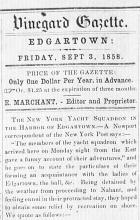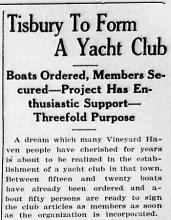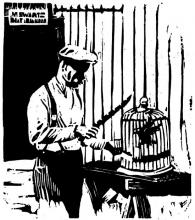There was a feeling of excitement and expectation in the air as one arrived at the shipyard of Harvey F. Gamage in South Bristol, Me., Saturday morning.
Arriving at the same time were MacPherson’s Pipers, a seventeen-piece bagpipe band handsomely attired in full dress kilt regimentals of colorful tartan, their immaculate gaiters gleaming white in the water sun.
This February day was bright and beautiful. The brilliant blue sky was in striking contrast to the tall dark Marine pines, traces of snow and the sparkling gray-blue waters of the Cove.
Upon entering the shipyard shed, the sight of the extreme clipper schooner Shenandoah was indeed thrilling. The vessel of grace and beauty towered far above the heads of the visitors.
As the highlanders played, the spectators gathered to listen to the skirl of the pipes after they had climbed the long ramp from the shed floor to the deck and had gone below to inspect the beautifully done interior accomplished by expert ships’ carpenters.
There was great interest in the vessel and in the launching, which was attended by more than 400 people, many of whom came from the Island for the occasion.
Excitement Intensified
As the time drew near for the launching, the air of excitement intensified as the workman with rhythmic strokes knocked out the remaining blocks from under the skag. The great doors opened, and on the stroke of noon after being christened with the traditional champagne by the owner’s father, James H. Douglas of Lake Forest, Ill., the Shenandoah slid swiftly and silently down the ways into the waters of the Cove - straight and true. She was then snubbed short and guided to her place at the wharf.
Very soon, smoke was seen rising from the galley and luncheon was served to guests in the main saloon of the vessel.
The Shenandoah is the largest wooden sailing vessel, with no inboard power, built on the Atlantic Coast since 1921. She is a modification of the lines of Revenue Cutter Joseph Lane, launched in 1849. The Shenandoah is 108 feet in length over all, with a 23 foot beam, a draft of ten and one-half feet. Her hull form makes her an “extreme clipper.” She spreads 7,000 feet of canvas in her nine sails: Mainsail, foresail, jib and flying jib are her lower sails, while flying on top, are main gaff-topsail, fisherman’s stay-sail, fore-topsail and fore-top gallante. The sails are made by Clarence Hale of Sargentsville.
She is built almost entirely of Maine oak, except for deck and ceilings, which are of native pine.
She will be the only commercial square-rigged ship under the American Flag. A sixteen foot yawl boat built by Arno Day of Brookline, with a 59-H.P. Diesel is the only auxiliary power. When not in use the yawl boat will be slung on stern davits.
A Passenger Cruise Ship
The Shenandoah will be used as a passenger Cruise Ship sailing out of Vineyard Haven on weekly cruises in the waters between Nantucket and Long Island Sound. There is space aboard for twenty-nine passengers, six crew members and the captain, Robert S. Douglas. Conforming to the original vessel equipment are brass kerosene lamps and an “Old Time” organ in the main saloon, while topside are the handpowered bilge pumps and a long-barrel windlass for raising the anchor by hand. The concessions to modern day building are fiver watertight bulkheads and a Diesel generator to supply electricity.
Captain Douglas was graduated from Northwestern University in 1955. He is a Reserve Captain in the U. S. Air Force. While in the Air Force he flew jet interceptors in the Defense Command.
Vineyarders look forward with great anticipation to that day sometime in June when the beautiful Shenandoah is complete with masts, spars and sails will sail into Vineyard Haven harbor, her home port.










Comments